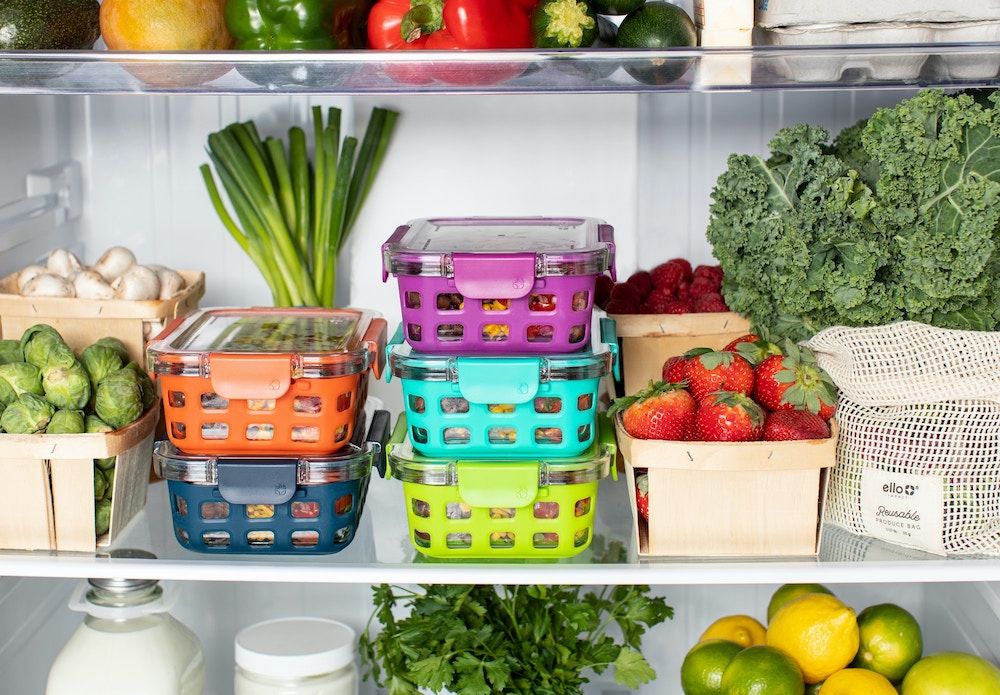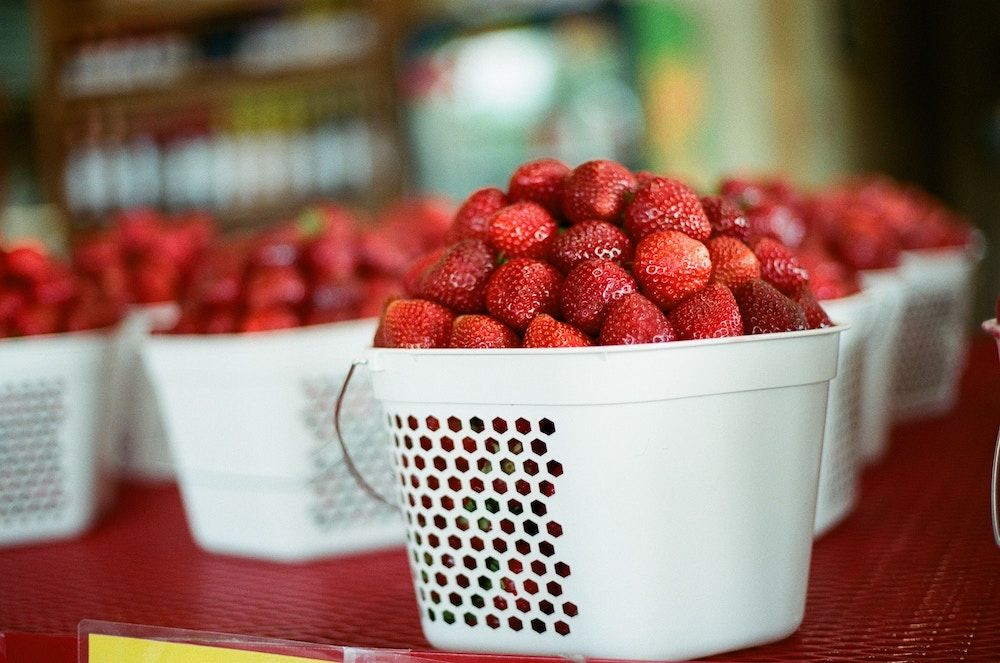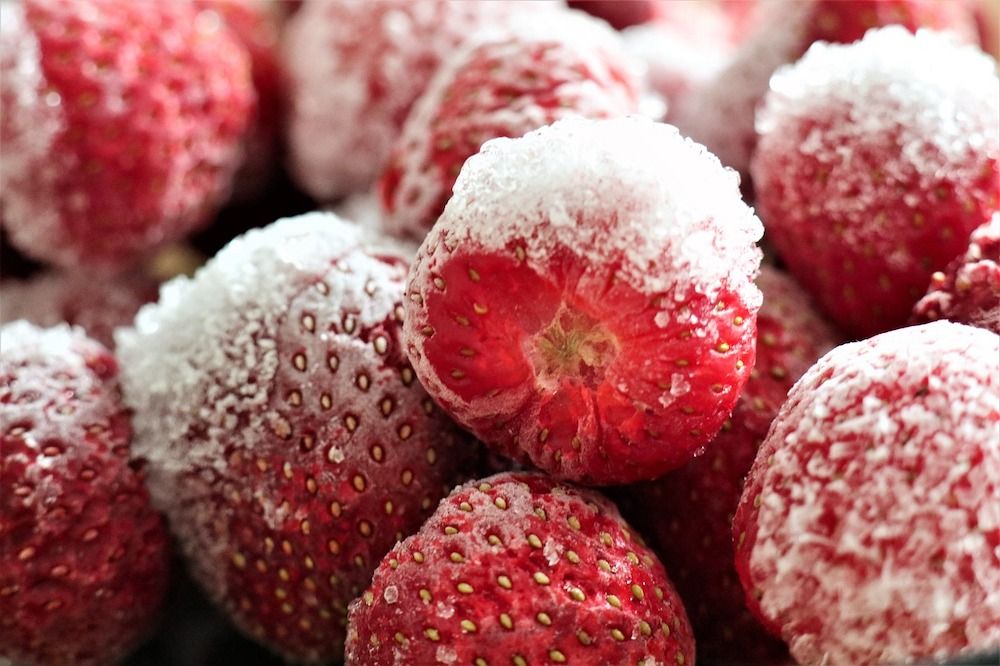Strawberries are a popular fruit, known for their bright red color, refreshing sweet flavor, and scrumptious scent. They do well in pies, desserts, and jams, but there isn't much that is comparable to a freshly picked strawberry. That said, things can quickly go sour (literally) if you don't shop for and store your strawberries properly.
Choosing your strawberries takes a little consideration, especially if you do not plan to eat them immediately. Avoid picking or purchasing fruits that are bruised, damaged, or look moldy, and instead search for firm, brightly colored, sweet-scented berries.
Once you have your berries in hand, it's time to store them! Fortunately, there are a few different options for keeping them fresh or preserving them, as well as a number of tips and tricks to ensure they last as long as possible.
Tools You Will Need
Properly storing strawberries requires a few different items, depending on how you choose to store them.
- Fresh strawberries
- Refrigerator
- Colander
- Ventilated container with a lid
- Paper towel
- Saran wrap
- Sharp knife
- White sugar
- Freezer containers or bags
Storing Strawberries: The Best Way
With the right tools in tow, learn about the best way to store strawberries.
Refrigerate
It is best to refrigerate whole strawberries if you want freshly picked or bought berries to last. Keep them in temperatures around 40 degrees Fahrenheit to help them stay fresh longer. Warmer temperatures can cause strawberries to dry out and shrivel up, which is not ideal when you expect a juicy bite.
Strawberries will do fine on the counter for a couple of hours at room temperature (around 68 to 72 degrees Fahrenheit), especially if you are going to eat them and use them up quickly. Otherwise, you cannot go wrong with keeping them cool in the fridge, where they will store for one to two days. If you do not intend on using them soon, consider freezing them instead (more on that below).
Always store fresh fruits and vegetables above raw meat in the fridge to prevent cross-contamination.
Use Ventilated Containers
Avoid placing fresh, whole strawberries in airtight containers as they seal in moisture, causing the berries to rot more quickly. Instead, keep the fruits in ventilated containers with a perforated lid. Colanders and open weave baskets are a great option, and you can easily place saran wrap on top. Also, keep a paper towel at the bottom of the container to soak up any extra moisture, which helps the berries stay fresh for longer.
Keep Them Whole
Keeping freshly sliced berries in the fridge seems great in theory; it is easy to grab from the fridge, ready for snacking or adding to lunches. But in reality, the strawberries will dry out, removing the sweet flavor you look forward to. Instead, it is best to keep your strawberries whole unless you are preserving them. The same goes for hulling strawberries – only remove the leafy green caps when you are ready to eat or use the fruits.
Freezing Strawberries
If you have an especially large haul of berries and don't expect to eat them before they go bad, freezing them is a great option.
Before preserving your berries, wash them under cool running water in a colander and pat dry with a paper towel. Remove and discard the hull and slice with a sharp knife to suit your preference.
Use freezer containers or bags to store the berries, whether they are whole, sliced, or mashed. Also, you may want to mix one part sugar with six parts strawberries to help the berries maintain their sweetness. Leave ½ inch of room at the top and seal the bags or containers. Strawberries last for up to one year in the freezer.
Avoid soaking berries in water as the water can spread contamination more easily. Also, do not wash in soaps or detergents as the berries can absorb the residue, altering their flavor.
Storing Strawberries: What Not to Do
Learn what to avoid when storing strawberries.
Wash Immediately
One common mistake that many people make when storing strawberries is washing them too quickly. While you may be tempted to wash the whole batch and then store them in your fridge, it is better to wait until you are going to eat them, which goes for many other fruits and veg. Moisture causes strawberries (and other fruits) to rot more quickly. Soaking strawberries in water well before you intend to eat them can also remove the nutrients and flavor. So, it is best to wash them directly before using them.
Store Damaged Berries
Regularly inspect your strawberries and quickly remove damaged or rotten strawberries from the batch as they can cause the other berries to rot faster.
It is also important to leave the berries intact. The center of the strawberry is prone to mold, so cutting it or removing the stems can be dangerous to your health. If you do cut up your strawberries and do not finish them all, it might be best to freeze them. That said, you can store them in the fridge as long as you opt for an airtight container to halt the chance of bacteria or mold growth.
Berry Fresh Strawberries!
While it is a great idea to harvest or purchase, prepare, and eat strawberries all on the same day, it is not always practical. Fortunately, you can refrigerate or freeze your berries to make them last longer. Avoid washing, cutting, and hulling your berries until right before you are using them, always inspect for any rotten fruits, and keep fresh berries in the fridge in ventilated containers for only one to two days. If you want them to last a little longer, preservation methods are always an option!
Do you know anyone whose berries always seem to go rotten before they can eat them? Share this guide to lend a helping hand!








